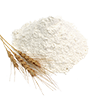Sign In Chef

By using our free meal planner (and the rest of spoonacular.com) you have to agree that you and only you are responsible for anything that happens to you because of something you have read on this site or have bought/cooked/eaten because of this site. After all, the only person who controls what you put in your mouth is you, right?
Spoonacular is a recipe search engine that sources recipes from across the web. We do our best to find recipes suitable for many diets — whether vegetarian, vegan, gluten free, dairy free, etc. — but we cannot guarantee that a recipe's ingredients are safe for your diet. Always read ingredient lists from the original source (follow the link from the "Instructions" field) in case an ingredient has been incorrectly extracted from the original source or has been labeled incorrectly in any way. Moreover, it is important that you always read the labels on every product you buy to see if the product could cause an allergic reaction or if it conflicts with your personal or religious beliefs. If you are still not sure after reading the label, contact the manufacturer.
We also attempt to estimate the cost and calculate the nutritional information for the recipes found on our site. Again, we cannot guarantee the accuracy of this information. Additionally, our nutrition visualizer that suggests that you limit sodium, sugar, etc., and get enough protein, vitamins, and minerals is not intended as medical advice. Similarly, our health tips are based on articles we have read from various sources across the web, and are not based on any medical training. The team behind spoonacular does not possess any medical qualifications and the information may be found to be incorrect or out of date based on future research. If you need help planning your diet or determining which foods (and recipes) are safe for you, contact a registered dietitian, allergist, or another medical professional.
Spoonacular is not responsible for any adverse effects or damages that occur because of your use of the website or any information it provides (e.g. after cooking/consuming a recipe on spoonacular.com or on any of the sites we link to, after reading information from articles or shared via social media, etc.)
×$0.55 per serving

1 likes

Ready in 45 minutes

Spoonacular Score: 83%
If you have around 45 minutes to spend in the kitchen, Mint, Fennel and Garlic Naan might be a great lacto ovo vegetarian recipe to try. One serving contains 233 calories, 10g of protein, and 5g of fat. This recipe serves 10. For 55 cents per serving, this recipe covers 14% of your daily requirements of vitamins and minerals. 1 person were glad they tried this recipe. A mixture of brown sugar, f water, nutritional yeast, and a handful of other ingredients are all it takes to make this recipe so yummy. It is brought to you by Foodista. It works well as a very budget friendly hor d'oeuvre. Only a few people really liked this Indian dish. With a spoonacular score of 75%, this dish is solid. Try garlic naan , how to make garlic naan on stove top and oven, garlic naan , how to make garlic naan on stove top and oven, and garlic naan , how to make garlic naan on stove top and oven for similar recipes.
Fingerfood can be paired with Sparkling Wine and Sparkling rosé. If you're serving a selection of appetizers, you can't go wrong with these. Both are very food friendly and complement a variety of flavors. The NV Hazlitt 1852 Vineyards Cat Fizz Bottle of Wine with a 5 out of 5 star rating seems like a good match. It costs about 11 dollars per bottle.
 Its rich blend offers a vibrant fruit-forward mouth feel with a crisp effervescent finish.
Its rich blend offers a vibrant fruit-forward mouth feel with a crisp effervescent finish.
» Get this wine on Amazon.com


































Read the detailed instructions on Foodista.com – The Cooking Encyclopedia Everyone Can Edit